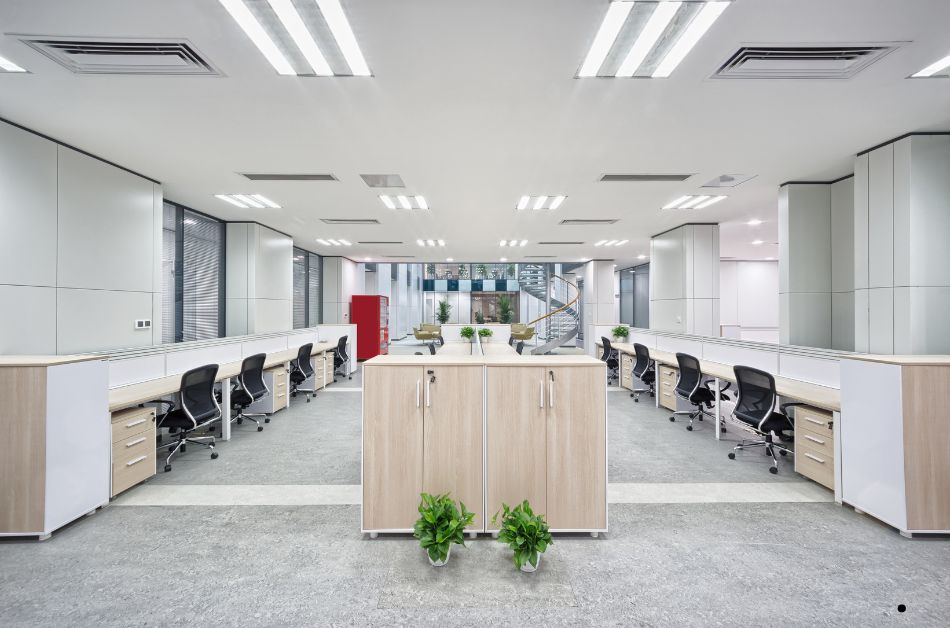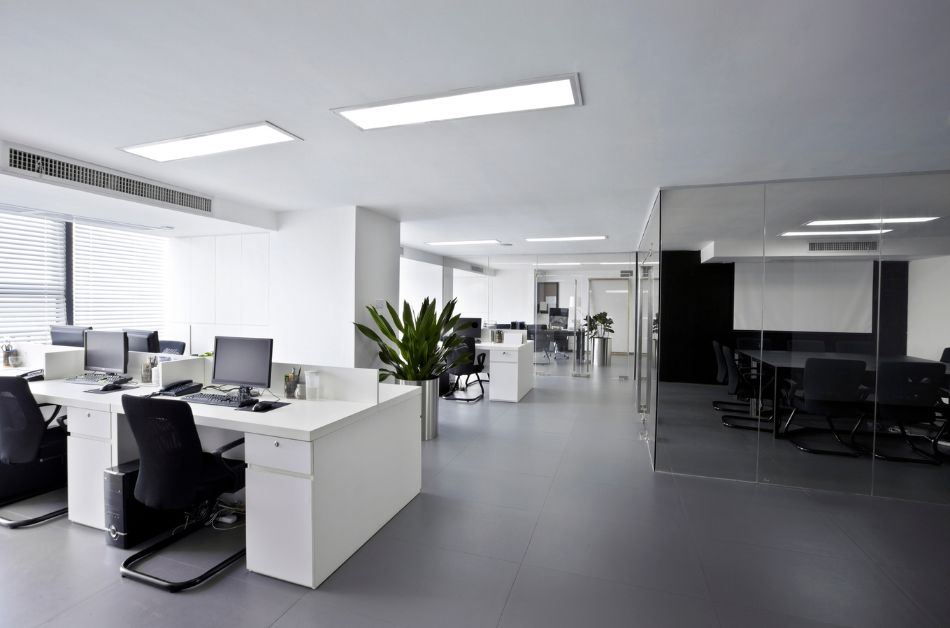Discover the key factors to consider when it comes to office lighting and how it can impact productivity and well-being.
Introduction
Proper office lighting is essential for fostering a productive and comfortable work environment. Proper lighting not only enhances visibility but also contributes to the overall well-being and satisfaction of employees. In this article, we will explore the importance of office lighting, its impact on productivity, mood, and health, different types of office lighting fixtures, factors to consider when choosing office lighting, innovations in office lighting, tips for optimizing office lighting, frequently asked questions, and conclude with key takeaways.
Importance of Proper Office Lighting
Proper office lighting is essential for several reasons. Firstly, it helps to prevent eye strain and fatigue, which can negatively affect productivity. Adequate lighting reduces the risk of headaches, blurred vision, and other visual discomforts. Secondly, good lighting creates a comfortable and inviting atmosphere, promoting a positive work environment. It enhances focus, concentration, and overall work performance. Lastly, proper lighting contributes to employee safety by reducing the risk of accidents and injuries.
In addition to these practical benefits, proper office lighting also has a significant impact on the well-being and satisfaction of employees. Natural light and well-balanced artificial lighting can improve mood, reduce stress, and enhance overall mental and emotional well-being. By investing in suitable office lighting, employers can create a more pleasant and stimulating workspace, leading to increased employee engagement and job satisfaction.
How Office lighting affects productivity, mood, and health
Office lighting has a profound effect on productivity, mood, and health. Insufficient or poor-quality lighting can lead to decreased productivity, as it can cause eye strain, fatigue, and difficulty in focusing. Inadequate lighting can also result in decreased alertness and increased errors and accidents.
On the other hand, proper lighting can enhance productivity by providing sufficient brightness and reducing visual discomfort. It can help employees stay focused, alert, and energized throughout the day. Moreover, well-designed lighting that mimics natural light can positively impact mood and mental well-being. Exposure to natural light or artificial lighting that closely resembles it can help regulate circadian rhythms, improve mood, reduce stress, and contribute to better overall health.
It’s important to note that different tasks may require different lighting levels. For example, tasks that involve detailed work may require brighter lighting, while tasks that require a more relaxed and comfortable environment may benefit from softer lighting. Understanding the specific lighting needs for different areas and tasks within the office can further optimize productivity, mood, and health.
Types of Office Lighting Fixtures
There are various types of office lighting fixtures available, each serving different purposes. Some common types include:
– Overhead Lighting: This type of lighting provides general illumination to the entire office space. It typically consists of ceiling-mounted fixtures such as recessed lights, fluorescent tubes, or LED panels.
– Task Lighting: Task lighting is focused lighting that illuminates specific work areas, such as desks, workstations, or conference tables. It helps to improve visibility and prevent eye strain during detailed tasks.
– Ambient Lighting: Ambient lighting creates a pleasant and comfortable overall illumination in the office. It includes indirect lighting fixtures like wall sconces, floor lamps, or pendant lights.
– Natural Lighting: Incorporating natural light into the office space through windows, skylights, or light tubes can provide numerous benefits. Natural light is known to enhance mood, reduce stress, and improve overall well-being.
By combining these different types of lighting fixtures strategically, employers can create a well-lit and balanced office environment that meets the needs of employees and enhances productivity.
Factors to Consider When Choosing Office Lighting
When choosing office lighting, several factors should be taken into consideration:
– Brightness: The lighting should be bright enough to provide adequate visibility without causing glare or discomfort.
– Color Temperature: Different color temperatures can create different moods and atmospheres. Warm white light (2700K-3000K) is soothing and cozy, while cool white light (3500K-5000K) is energizing and promotes focus.
– Energy Efficiency: Opting for energy-efficient lighting solutions, such as LED bulbs or fixtures, can help reduce energy consumption and lower utility costs.
– Flexibility and Control: Having the ability to adjust lighting levels and create different lighting zones can accommodate different tasks and preferences.
– Health and Safety: Consider lighting that minimizes flickering, reduces eye strain, and complies with safety regulations.
By carefully evaluating these factors and considering the specific needs and preferences of the office space, employers can make informed decisions when selecting office lighting.
Innovations in Office Lighting
Advancements in technology have brought forth various innovations in office lighting. Some notable innovations include:
– Smart Lighting Systems: These systems use sensors, automation, and wireless controls to adjust lighting levels based on occupancy, daylight availability, and time of day. They help optimize energy efficiency and provide customizable lighting experiences.
– Human-Centric Lighting: Human-centric lighting aims to mimic natural lighting conditions by adjusting color temperature and intensity throughout the day. This can help regulate circadian rhythms, improve mood, and enhance overall well-being.
– Task-Based Lighting Solutions: Task-based lighting systems provide individualized lighting for specific work tasks. These systems can be customized to meet the unique lighting needs of different employees and workstations, promoting comfort and productivity.
By embracing these innovations, employers can create a modern and dynamic office lighting environment that maximizes employee well-being and performance.
Tips for Optimizing Office Lighting
Here are some tips to optimize office lighting:
– Maximize Natural Light: Whenever possible, utilize natural light by positioning workstations near windows or incorporating skylights.
– Use Task Lighting: Provide additional task lighting, such as desk lamps, to supplement general lighting and improve visibility for specific tasks.
– Avoid Glare: Position light fixtures and computer screens to minimize glare and reflections. Use anti-glare filters on screens if necessary.
– Consider Dimming Controls: Install dimming controls or adjustable lighting fixtures to allow employees to customize lighting levels based on their preferences and task requirements.
– Regular Maintenance: Ensure regular cleaning and maintenance of lighting fixtures to maintain optimal brightness and performance.
By implementing these tips, employers can create an office environment that promotes employee well-being, productivity, and satisfaction.
FAQs
1. What is the recommended lighting level for office spaces?
The recommended lighting level for office spaces is typically between 500 and 1000 lux. However, specific tasks and individual preferences may require adjustments to this range.
2. Can office lighting impact employee health?
Yes, office lighting can impact employee health. Insufficient or poor-quality lighting can cause eye strain, fatigue, headaches, and other discomforts. On the other hand, proper lighting that mimics natural light can regulate circadian rhythms, improve mood, and contribute to overall well-being.
3. Are LED lights a good choice for office lighting?
Yes, LED lights are a popular choice for office lighting due to their energy efficiency, long lifespan, and flexibility in color temperature options.
4. How can I reduce glare in the office?
To reduce glare in the office, position light fixtures and computer screens to minimize direct reflections. Use anti-glare filters on computer screens if necessary. Properly designed lighting layouts can also help minimize glare.
5. Can office lighting affect productivity?
Yes, office lighting can significantly affect productivity. Insufficient lighting can lead to decreased focus, concentration, and work performance, while proper lighting can enhance productivity by providing adequate brightness and reducing visual discomfort.
6. What is human-centric lighting?
Human-centric lighting refers to lighting systems that mimic natural lighting conditions by adjusting color temperature and intensity throughout the day. This type of lighting aims to regulate circadian rhythms, improve mood, and enhance overall well-being.
7. How can I create a flexible lighting system in the office?
To create a flexible lighting system, consider installing dimming controls or adjustable lighting fixtures. This allows employees to customize lighting levels based on their preferences and specific task requirements.
8. What are the benefits of natural lighting in the office?
Natural lighting in the office has numerous benefits. It enhances mood, reduces stress, improves overall well-being, and can even contribute to energy savings by reducing the need for artificial lighting during daylight hours.
9. How often should office lighting fixtures be cleaned and maintained?
Office lighting fixtures should be regularly cleaned and maintained to ensure optimal brightness and performance. The frequency of cleaning and maintenance may vary depending on the specific fixtures and environmental conditions.
10. Can office lighting affect employee satisfaction?
Yes, office lighting can have a significant impact on employee satisfaction. Proper lighting that promotes visibility, comfort, and well-being can contribute to a positive work environment and enhance overall job satisfaction.
Conclusion
Office lighting is a crucial aspect of creating a productive, comfortable, and healthy work environment. By understanding the importance of proper office lighting and considering factors such as brightness, color temperature, energy efficiency, flexibility, and safety, employers can make informed decisions when selecting lighting fixtures. Innovations in office lighting, such as smart lighting systems and human-centric lighting, offer exciting possibilities to enhance employee well-being and performance. By optimizing office lighting, employers can create a workspace that fosters productivity, improves mood, and contributes to overall job satisfaction.



